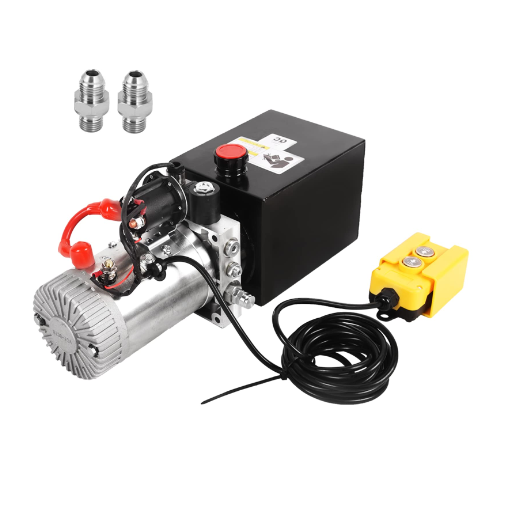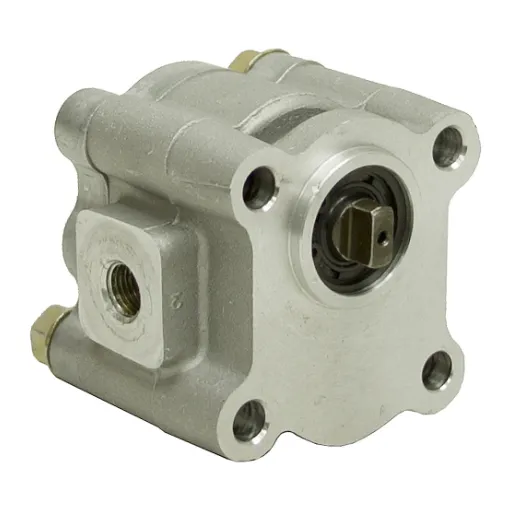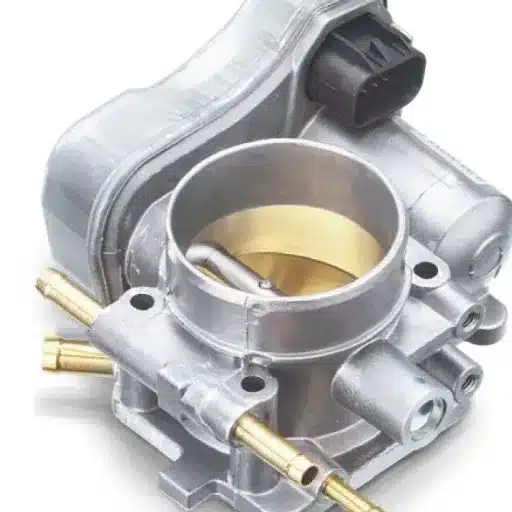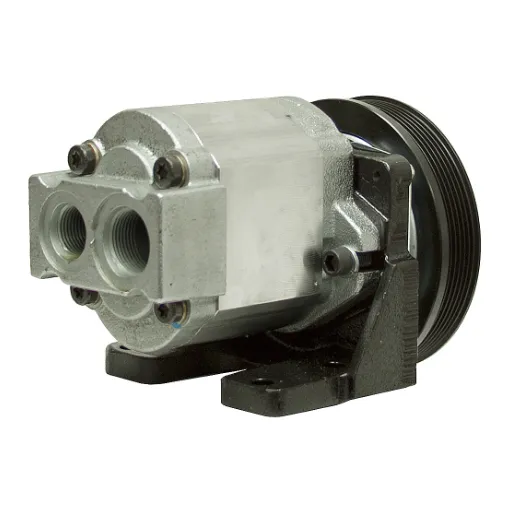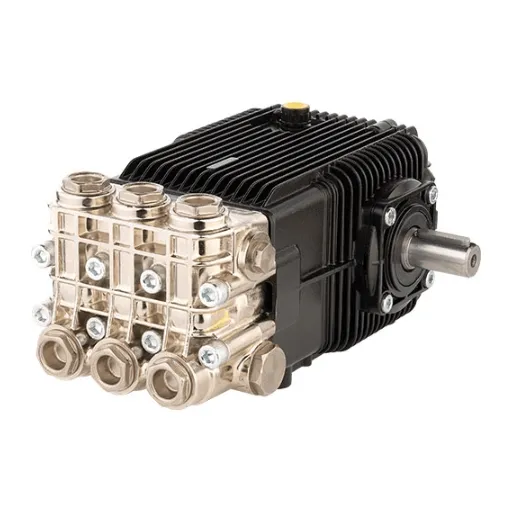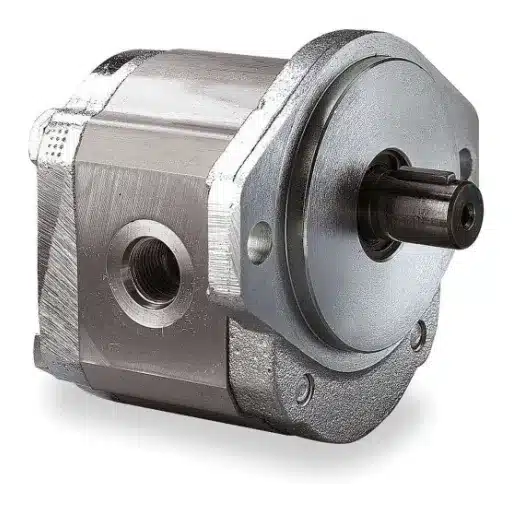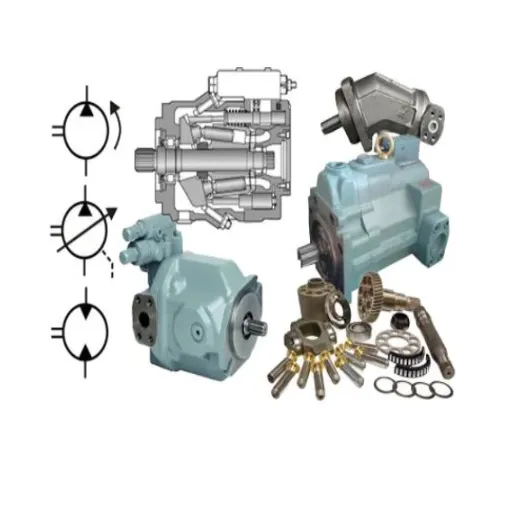Across many industries, hydraulic power units (HPUs) serve as sturdy sources of energy required to run machinery and equipment in a wide variety of applications. At the heart of any HPU is the hydraulic pump unit, which serves as the lifeline for the system and is instrumental in achieving better efficiency, performance, and functionality.
This comprehensive guide explores hydraulic pump units, their role, design, and working principles, while demonstrating their importance in several industrial applications. Whether you’re an engineer, technician, or someone wanting to understand the basics behind this important technology, this article will equip you with essential technical knowledge about hydraulic power.
Types of Hydraulic Pump Units
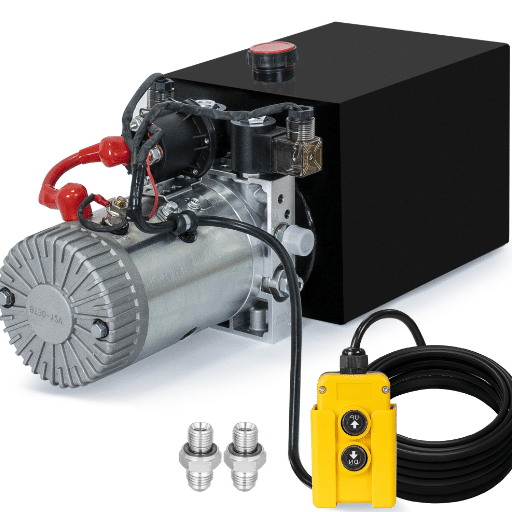
Gear Pumps
Gear pumps represent one of the oldest classes of hydraulic pumps, valued for their simplicity of construction, robust design, and efficiency. They operate using two meshing gears to pump fluid, with one gear driven by an external source (typically an electric motor) while the other rotates through meshing action.
How Gear Pumps Work:
- Rotating gears create a vacuum at the inlet, drawing fluid into the pump
- Fluid is displaced through the outlet as gear teeth come together
- Design guarantees steady flow with minimal pulsations
- Reliable performance across low-to-medium pressure ranges
Types of Gear Pumps:
| Pump Type | Configuration | Best Applications | Key Advantages |
|---|---|---|---|
| External Gear Pumps | Two identical gears in a casing | High-speed applications | Simple design, good for speed |
| Internal Gear Pumps | One external, one internal gear with crescent spacer | Low-speed, high-viscosity fluids | Quieter operation, handles thick fluids |
Key Benefits of Gear Pumps:
- Simple mechanisms requiring minimal maintenance
- Consistent output and power for long operational periods
- Durable choice for agriculture, construction, and manufacturing
- Cost-effective and versatile solution
Piston Pumps
Piston pumps are powerful positive-displacement pumps that utilize reciprocating piston mechanisms to displace fluid. These pumps excel in high-pressure hydraulic systems and deliver precise fluid quantities, often with materials reinforced to withstand pressures exceeding 10,000 psi.
Applications and Industries:
- Aerospace: High-precision control systems
- Oil and Gas: High-pressure drilling operations
- Heavy Equipment: Construction and mining machinery
Advantages of Piston Pumps:
- Exceptional efficiency and versatility
- Consistent pressure and flow rate maintenance
- Suitable for various fluid viscosities and temperatures
- Enhanced durability through modern materials and smart diagnostics
Vane Pumps
Vane pumps are positive displacement pumps considered simple, efficient, and versatile across various industries. They operate through adjustable vanes mounted on a rotor, trapping fluid in chambers and displacing it during rotation.
Key Features:
- Few moving parts leading to reduced friction and wear
- Lower maintenance requirements
- Consistent output regardless of fluid thickness
- Self-priming capability for good fluid flow at startup
- Quiet operation with maintained efficiency at variable speeds
Common Applications:
- Lubrication systems
- Fuel transfer operations
- Hydraulic power systems
- Automotive and aerospace industries
Industrial Applications of Hydraulic Pump Units
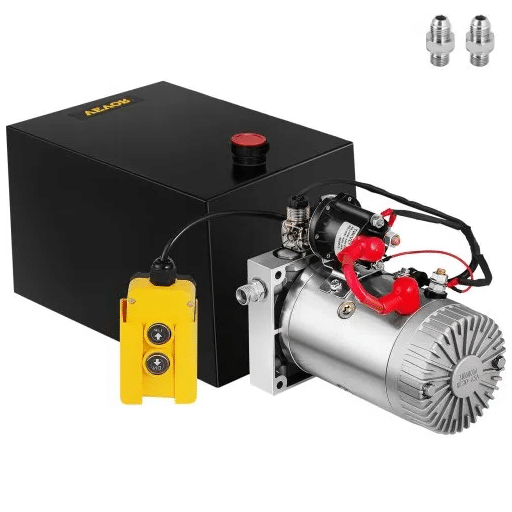
Manufacturing and Automation
Hydraulic pump units are crucial for operating state-of-the-art manufacturing and automation systems where precision and reliability are non-negotiable.
Key Applications:
- CNC Machining: Precise linear and rotary motion control
- Injection Molding: High-pressure material forming
- Automated Assembly Lines: Synchronized motion control
- Robotic Arms: Force application for welding, handling, and packaging
Modern Advancements:
- Energy-efficient variable displacement pumps
- IoT-enabled sensors for predictive maintenance
- Programmable logic controller integration
- Real-time monitoring of pressure, temperature, and flow rates
Construction Equipment
Advanced technologies in construction equipment have revolutionized operational efficiency and performance parameters through integrated hydraulic systems.
Technology Integration:
- Telematics Systems: GPS, sensors, and cloud-based platforms for real-time monitoring
- Autonomous Features: AI and machine learning for precision tasks
- Electric/Hybrid Powertrains: Reduced fuel consumption and emissions
- Fleet Management: Efficient scheduling and predictive maintenance
Aerospace and Aviation
The aerospace and aviation industry relies heavily on hydraulic systems for critical operations, with continuous technological advancement driving improvements.
Key Developments:
- Lightweight Composite Materials: Reduced aircraft weight and improved fuel efficiency
- Advanced Turbofan Engines: Greater thrust-to-weight ratios with reduced environmental impact
- Next-Generation Avionics: Enhanced navigation, communication, and automation
- Sustainable Aviation Fuels (SAFs): Up to 80% reduction in lifecycle CO2 emissions
Contributions of Hydraulic Pump Units to Mechanical Systems
Power Transmission
Hydraulic pump systems are crucial for various industries to power their engineering systems with utmost accuracy and robustness. The working principle involves converting mechanical energy into hydraulic energy through fluid pressurization.
Key Advantages:
- High reliability and capability for handling heavy loads
- Low energy losses during transmission
- Variable load handling with proportional control
- Integration with digital monitoring and control systems
Fluid Control
Modern fluid control systems employ advanced technology to achieve precision, efficiency, and reliability across industries from industrial automation to aerospace engineering.
Advanced Components:
- Proportional Valves: Real-time fluid dynamics monitoring
- Flow Meters: Accurate measurement and control
- Intelligent Regulators: Adaptive algorithms for dynamic adjustment
- IoT Connectivity: Cloud-based performance analytics
Load Handling
Load handling systems are indispensable for smooth operations in manufacturing, logistics, and construction, ensuring safe movement of materials and equipment.
Modern Technologies:
- Machine learning integration for predictive analytics
- Smart cranes and automated guided vehicles
- Real-time monitoring and feedback systems
- IoT-enabled sensors for enhanced precision
Maintenance Tips for Hydraulic Pump Units
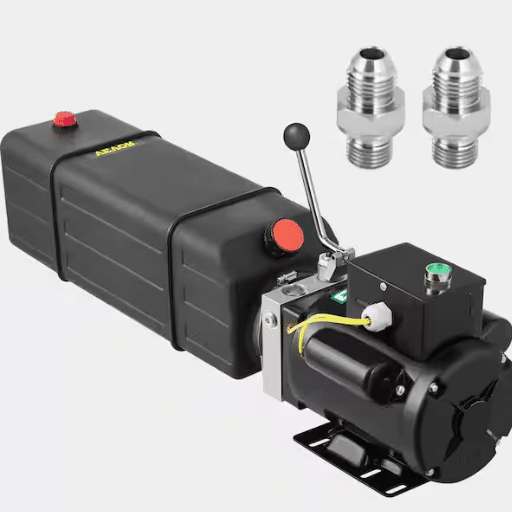
Regular Inspection and Cleaning
Essential Inspection Areas:
- Pump assembly and components for wear, corrosion, or leakage
- Seals and connections for integrity
- Vents, filters, and fluid reservoirs for cleanliness
- External surfaces for dirt, debris, and sludge accumulation
Best Practices:
- Maintain comprehensive inspection and cleaning logs
- Use efficient filtration systems to screen particulates
- Schedule preventive maintenance during low-impact periods
- Monitor system performance trends for early issue detection
Fluid Quality Management
Good fluid quality control is essential for the performance and longer service life of hydraulic systems. The fluid serves as the lifeblood of any hydraulic pumping unit.
Key Monitoring Parameters:
- Particle Counting: Monitor contamination levels
- Spectroscopy: Analyze fluid composition
- Water Content: Prevent moisture-related issues
- Temperature Control: Maintain optimal operating conditions
Quality Standards:
| Parameter | Standard | Impact if Exceeded | Monitoring Method |
|---|---|---|---|
| Cleanliness Level | ISO 4406 | Component wear, system failure | Particle counting |
| Water Content | < 0.05% by volume | Corrosion, additive depletion | Karl Fischer titration |
| Operating Temperature | Manufacturer specified | Viscosity loss, oxidation | Temperature monitoring |
Seals and Gasket Maintenance
Properly maintained seals and gaskets are crucial for ensuring hydraulic system reliability and efficiency, preventing fluid leaks and maintaining system pressure.
Inspection Checklist:
- Look for wear, cracking, deformation, or hardening
- Verify material compatibility with system fluids
- Check temperature and pressure range suitability
- Ensure proper torque values for metallic gaskets
Advanced Diagnostic Tools:
- Ultrasonic Leak Detectors: Identify hidden leaks
- Thermal Imaging Cameras: Detect temperature anomalies
- Controlled Environment Installation: Prevent contamination during replacement
Troubleshooting Common Hydraulic Pump Issues
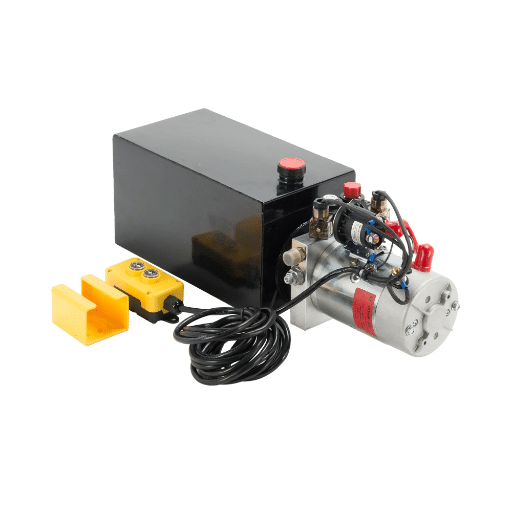
Identifying Leaks
Hydraulic leaks represent one of the most common and serious problems affecting system performance and reliability.
Types of Leaks:
| Leak Type | Detection Method | Common Symptoms | Diagnostic Tools |
|---|---|---|---|
| External Leaks | Visual inspection | Fluid pools, oily residue, dropping reservoir levels | Lint-free cloth testing, UV dye |
| Internal Leaks | Performance testing | Reduced efficiency, slow actuator response, pressure irregularities | Ultrasonic detectors, thermal imaging |
Addressing Low-Pressure Problems
Common Causes and Solutions:
- Internal Leaks: Inspect and replace worn seals
- Pump Inefficiency: Check for wear and performance degradation
- Clogged Filters: Replace filters and use quality hydraulic fluids
- System Contamination: Implement proper filtration systems
Modern Diagnostic Approaches:
- Pressure sensors and flow meters for real-time monitoring
- IoT devices for continuous performance tracking
- Cloud-based analytics for predictive maintenance
- Instant alerts for parameter deviations
Resolving Noise and Vibration Issues
Noise and vibration in hydraulic systems typically signal mechanical inefficiencies and require immediate attention.
Common Causes:
- Cavitation: Vapor bubble formation and collapse in low-pressure zones
- Aeration: Air trapped within the fluid system
- Misalignments: Poor pump-to-motor alignment
- Component Wear: Loose or deteriorated parts
Resolution Steps:
- Inspect system seals, connections, and fittings for air leaks
- Maintain proper fluid levels and viscosity
- Check and adjust component alignment
- Implement pulsation dampeners or sound-insulated enclosures
- Use advanced diagnostic tools for frequency analysis



